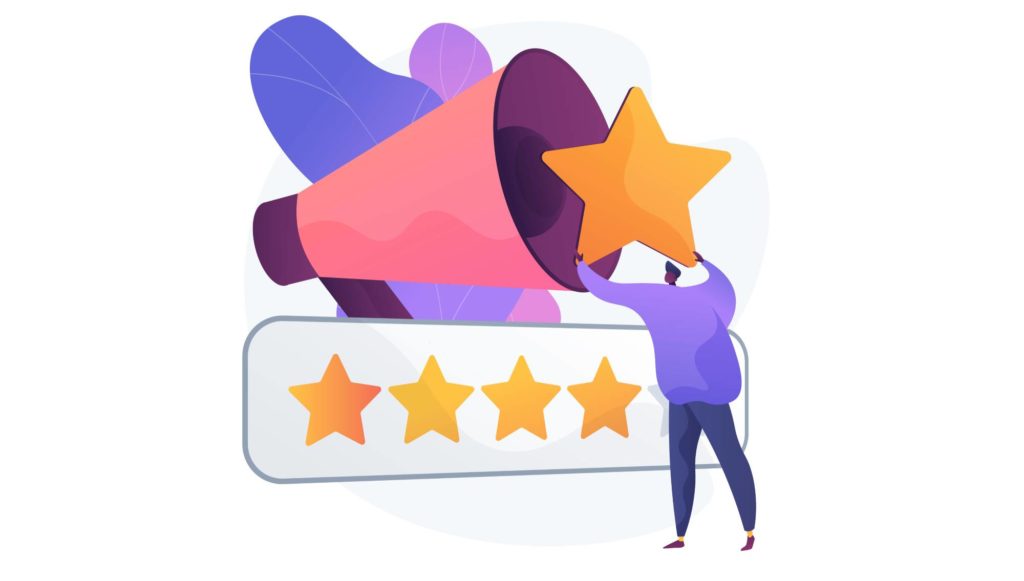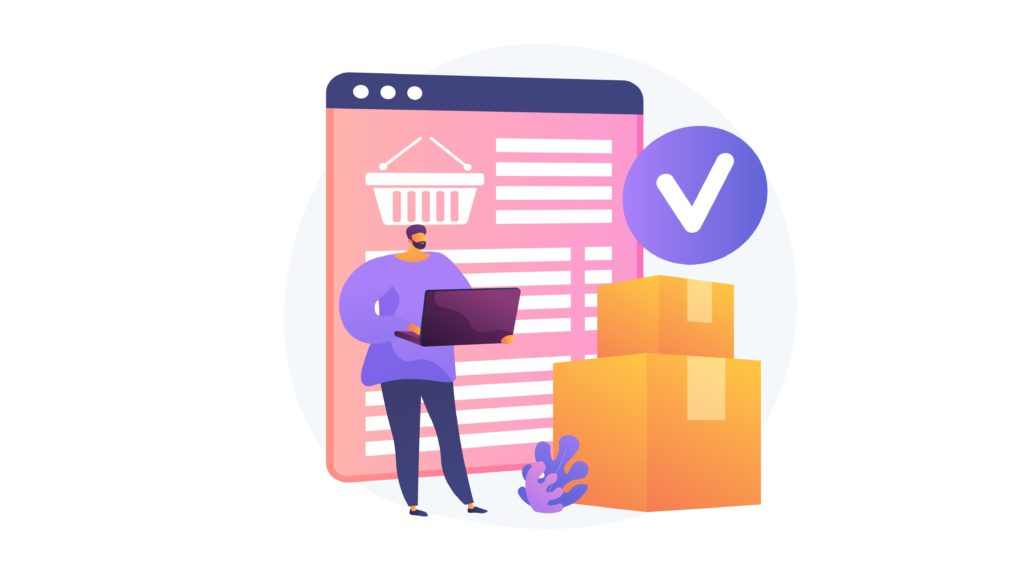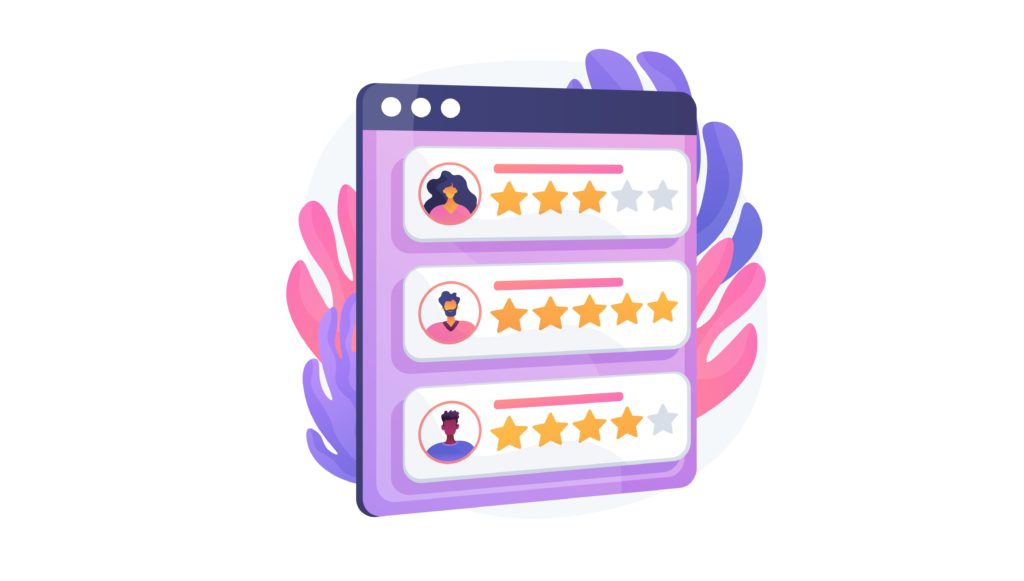Website traffic from mobile devices is steadily increasing – a phenomenon which experts consider to be quite natural. If you have noticed a decrease in conversion on your mobile site compared to desktop, one reason could be clunky navigation, which, even after adaption, does not fully satisfy user experience.
Research shows that 52% of users prefer smartphones to access the Internet. If you want to increase the conversion of your online store, here are eight steps you could take to create a flawless mobile version of your website.
How to Calculate Mobile Conversion Rate
When deciding to address mobile conversion rate optimisation, calculating mobile conversion rate is quite simple. You use this formula:
Conversion Rate = (Mobile Conversions / Total Mobile Visitors) * 100%
You can easily get all this data from Google Analytics.
For example, if 15,683 visitors visited your website in the last two months and 432 of them converted, the conversion rate for those two months is 2.75%.
8 Proven Ways to Increase Your Mobile Conversion Rate
Here at Atomic Leap Agency, we have not only prepared a selection of proven methods for conversion rate optimisation (CRO) for you; but also, for ease of implementation, we have categorised them by which page(s) they can be applied on your website.
All our suggestions below are based on analysis of user interactions with sites using Google Analytics. If you follow them you are sure to improve your mobile ecommerce conversion rate:
- For the whole site: Adaptation of the site for mobile devices
- All pages of the site: Readability
- All pages of the site: Use lazy loading
- For the catalogue page: Place products in two columns
- For the catalogue page: Optimise the filter
- For the product page: Make sticky CTA buttons
- For the product page: Image optimisation
- For your checkout page: Checkout Optimisation
For the whole site: Adaptation of the site for mobile devices
In order not to lose a significant volume of potential customers, check:
- How pictures are displayed and whether they load at all;
- Whether text or other elements overlay each other;
- If basic information is visible;
- Whether it is possible to place an order, and how convenient it is;
- How fast pages load.
To understand where to focus your attention, analyse what information the client needs to see in order to make a decision. Once you understand this and put it in place, go further and work on your appeal: it should be clear, noticeable, persuasive and convincing.
When you are up to speed, it is really important to regularly (at least once a month) check how the site is displayed on the screen of mobile devices.
All pages of the site: Readability
Pay special attention to this issue. Most e-commerce brands may have experienced problems with readability on their mobile websites at some point.
On the Enhancements tab in Google Search Console, check if you have the “Text is too small to read” error. If so, then the readability of your mobile site is to blame. The ideal font size for mobile screens is 16 pixels.
All pages of the site: Use lazy loading
For long directories with many graphic elements, use the technique of post-loading out-of-scope images. That is, pictures that change automatically or load immediately on the desktop version of your site will load on your mobile site only when the page is scrolled.
The advantages of lazy loading include:
- Saving traffic;
- Increasing the speed of opening pages;
- Reducing the load on the server.
For the catalogue page: Place products in two columns
For the desktop version of your online store, we recommend placing four to five product cards in a row. But for the mobile version, our recommendation is two in a row. This combination is most beneficial in terms of psychology and ease of scrolling.
For the catalogue page: Optimise the filter
Reduce the number of filters so that you only have most relevant and frequently used ones, such as price range slider, size, type, brand flags, and colour. You can enable additional filters if necessary once you have analysed customer behaviour and studied analytics data.
For the product card: Make sticky CTA buttons
In the mobile version of your site, it is important that the call to purchase button is constantly in sight. To do this, use static buttons that appear immediately upon entering the catalogue and accompany the buyer while surfing through the pages.
For a product card (product page): Image optimisation
Optimise the quality of images displayed on mobile devices. You can easily resize and optimise website images with apps like TinyIMG, TinyJPG and iLoveIMG. Some of these apps offer bulk upload so you can process multiple images in one go.
For your checkout page: Checkout Optimisation
It is good practice to reduce the number of steps in the checkout process, reduce the number of form fields, add a checkout progress bar and offer one-click payment. In the fields to fill out, write an example of correct data entry and add a check.
Don’t get left out
Mobile e-commerce continues to grow, and you can’t afford to be left out. It will not be easy to implement the above steps to increase the conversion of the mobile version of the online store website on your own, but the time and effort spent will fully justify itself.
Equally, if you use a performance marketing agency like Atomic Leap the investment you make in our services will more than be returned in improved conversion rate optimisation.
Liked the article? Don’t forget to share it on social networks.

ABOUT THE AUTHOR
Wayland Coles is MD and Founder performance marketing agency Atomic Leap, where he helps businesses of all sizes capitalize on the power of PPC marketing.
LinkedIn: Wayland Cole
One of the key marketing goals for any company is to gain customer trust. This rarely happens by accident. There are specific proven techniques for building trust that a performance marketing agency like us is expert in. Let’s take a look at what they are in more detail.
What is the pyramid of trust and how does it work?

We’ll start by exploring a concept called the Pyramid of Trust.
This pyramid consists of five levels. It is a marketer’s job to lead website visitors higher through each of these stages as trust is built. Each level corresponds to certain buyer needs. Once they are satisfied, the visitor moves to the next level of trust.
| Trust level | Questions from visitors |
|---|---|
| The visitor does not trust the site | Can this site help you achieve a goal or solve a problem? |
| The visitor prefers other sites | Does it make sense to choose this site to solve your problem? Is this resource really better than others? |
| The visitor trusts the site and transfers personal information | Is this site valuable enough to take the time to sign up? Will I trust this site with my data (name, e-mail, phone)? Do I want to receive emails from the company? |
| Visitor provides financial information | Should I trust this site with my confidential data (bank card number, address, etc.)? Is it worth the risk? |
| The visitor has strong trust in the site | Am I comfortable enough to interact with this site on a consistent basis? |
Balance Site’s Demands and Users’ Trust Needs. The site’s requests and the users’ trust needs must be in equilibrium: Don’t make demands at higher levels of commitment until you’ve addressed all the trust needs at the inferior levels.
How to increase the level of trust in your site?

We have seen how trust is gained in general terms and what stages someone may go through. Now let’s look at specific actions that will help your website visitors move from the first step of the pyramid to its top, ultimately with the goal of improving your conversion rate optimisation and sales.
There are universal factors that build trust. As you are reading this, consider how well they are currently working for your site.

Good design
Attractive aesthetics will show visitors that your company has spent resources on developing your website. This will help to inspire confidence by showing your commitment to the market you are operating in. If you can spark a positive emotional response to the design it may even make visitors more tolerant should there be any clunky user experience issues.
Pay attention to the font, colours, logo, etc. By association, all these elements go towards conveying the quality of your products.
Colour scheme
The choice of colour scheme for the site is important for a visitor’s perception of your business value. Colour is part of your branding, signalling where you are positioned in the market, be that among the market leaders, in a premium segment or offering great value. If you have a well-thought-out brand strategy, the colours selected for your website will have a consistency with your products or services.


Website content and navigation
An important element in building visitor trust is to ensure your site is perceived as professional. Well composed and structured content helps keep users on the site and encourages them to spend time familiarising themselves with your goods or services.
Content that contains typos, broken links, and other problems quickly reduces a site’s credibility. Content is not only text, it is also graphics and other visual elements.
Openness and completeness of information
Whether online or through in-person channels, no-one would trust a person or company that hides something important from them. So it is important for visitors on your website to see complete information about goods, services and your company itself. They do not want to be left guessing or to find there was some hidden catch after they have bought something from you.


Contact information
It is important to provide up-to-date contact information and offer multiple channels of communication to reassure customers that they can get hold of you when necessary. It is even better for establishing trust if your company has a physical address to reinforce its online presence. The phone number is one of the key trust factors. It’s a good idea to include a phone number in the header and footer of your site.
Additional formal elements of trust
There are many other formal elements of trust that build credibility with your visitors. These include national licences or official accreditations (where applicable), social widgets and independently verified customer reviews.


Page speed
Most visitors will leave a slow site within ten seconds if pages take too long to load. Search engines also lower slow sites in the SERPs (search engine results pages). As a performance marketing agency, we see fast loading of website pages as being important for the reputation of a business as well as the SEO performance of its website.
For this reason, for example, the sites developed by us are loaded on average in 300 milliseconds. When it comes to site speed, the quicker the better; but at the very least try to keep the download times to no more than three to four seconds.
Company case studies
Detailed, energetic, interesting and accurate case studies are a powerful tool in helping to win the trust of customers. Case studies demonstrate the professionalism of your company and how you use your capabilities to overcome the challenges that your customers face.

Recommendations for the product page of an online store

Separately, we need to talk about trust in online stores. This will have a significant impact on your conversion rate and the number of sales.
So let’s talk about the main trust factors in e-commerce and how to work with them to improve conversion rate optimisation.

Reviews
Users trust external sources more than content on a company website. To benefit from this, connect reviews from third-party resources. Also consider adding video reviews if possible – they inspire much more confidence.
Video
Nowadays it is almost always a must to add product videos. Show how the product is packaged, what it comes with and so on. If we are talking about technology, demonstrate its launch, configuration and operation to bring something that may otherwise be intangible to life.


Calls to action
Look at the calls to action (CTAs) on your site. What role do they play? How effective are they? You can estimate their click-through rate using Google Analytics. If any of your CTAs aren’t working as effectively as they might, the good news is that you can experiment to get better results: try changing the location, button colour, and wording for example. With A/B testing functionality, you can find out which CTAs increase your conversions and reduce bounce giving you a vital competitive advantage.
Quality customer service
Think about how you can apply principles of good customer service on your website to improve sales; for example, providing all relevant information that a visitor may seek. If buyers can’t find information that’s important to them, they’re more likely to go to competitors.
Don’t let this happen! Use an online consultant or chat bot to answer customer questions in real time. In addition, create an FAQ section – answers to frequently asked questions from visitors. Answering frequently asked questions from people thinking of buying from you will increase their time on the site and your chances of making a sale.


Payment security
Paying due heed to financial security and data protection is essential for yours and your customer’s sakes. Take care to connect an SSL certificate to the site. This will not only help protect the security of payments and the safety of customers’ financial information, but also send a positive signal to people who are wondering whether to buy from you.
External trust factors

Of course, your website is not the only source of information about your company. You need to pay attention to external sites too, the credibility of your business depends on it.
Here are examples of some types of site where information about your company may be posted:
- Profile aggregators. For almost every business, many resources have been created that combine information about companies, say in a particular city or country. They usually don’t charge for adding minimal information about a new company. But if you want to be top of their lists for searches or to have better functionality to create an attractive profile, you will have to pay.
- Social networks. You are sure to be familiar with the main ones – LinkedIn, Facebook, Instagram… as well as more niche platforms. Important signals of trust on such networks include your number of subscribers, profile activity, as well as the design of the page and the regularity of publications.
- Navigational resources and reference books. Reviews, for example in Google My Business and Yelp, will increase the credibility of the site.
Final thoughts

Improving the credibility of your site means taking your business to a new level. Achieving this should be one of the priorities for newcomers to the market and those companies that want to grow.
You can implement everything yourself, or ask our Atomicleap.agency team for help. We will develop a broad strategy for promoting your business, updating your website and improving conversion rate optimisation.

ABOUT THE AUTHOR
Wayland Coles is MD and Founder performance marketing agency Atomic Leap, where he helps businesses of all sizes capitalize on the power of PPC marketing.
LinkedIn: Wayland Cole
If you are wondering how to improve the conversion of an online store, then you already know what conversion rates are and how to calculate them. Therefore, we will immediately get down to business and define the tools with which we best improve site conversion rate as a performance marketing agency.
Many people believe that the only way to increase store conversions is by reducing the number of abandoned carts. They are partly right, and we took a closer look at this method of conversion rate optimisation in How to Reduce Cart Abandonment. But there is more to the story and that is what we will explore next. And later on in this article we will share our best ecommerce conversion optimisation tips.
How to increase sales in an online store?
As an ecommerce conversion optimisation agency, we spend a lot of time making online stores the best they can be. So we can say with confidence that the main factors that initially affect the number of sales of an online store are:

Your knowledge of your target audience. Analyse your customers – things like their age, interests, needs, desires and income. This will help you to understand what is important for them when choosing a product and how you can make this process as appealing and convenient as possible for them.
The uniqueness of the product. How is your product different from others? What benefits does the buyer get? How hard is it to find a similar product? Being able to offer a unique selling proposition often increases conversion rates several times over.


Niche competitiveness. The higher the competition, the lower the store conversion. Potential customers come in, compare, and if they have a better option, they leave.
Reputation and credibility of your site. Naturally, there is a certain distrust amongst potential buyers towards a new entrant to the market. Work on trust factors to overcome this, such as ensuring you have a professional website, adding links to social networks, including contact information and your physical address and featuring customer reviews.


Site design. As part of your own website conversion analysis study the online stores of top companies in your niche. This will allow you to understand the most effective designs for selling your products and you can piggyback on this knowledge. Perhaps you need a redesign and in this case it is important to use a specialist web design company with relevant experience.
Usability. Ensuring your website delivers good user experience will build confidence in your online presence. Don’t forget that in this age when we each have so many screens that this applies to both the desktop version of your site and the version for tablets or mobile phones.


Content quality. Descriptions should be clear, giving comprehensive information about your products or services. It is important as well to use good quality photos/videos with natural colours. This adds a veneer of class to your site.
Terms of payment, delivery, return. When it comes to logistics, a narrow geographical service range, limited delivery and payment methods, and a no-returns policy will each reduce conversion.


Service. Just as in a regular bricks and mortar store, the quality of your customer service will influence conversion rate. Your tone, speed of reactions, interest, willingness to help and attitude as a whole will be a big part of how potential customers form their opinion about you and their desire to buy from you.
By taking these conversion in ecommerce factors into account and correcting them where need, it will be possible for you to minimise failures and increase the number of purchases from your online store.
All of the above is a great start, but if you are still wondering how to increase ecommerce conversion rate, check out the following top tips.
How to increase ecommerce conversions in 2023? Top ten tips
In order to capture the attention of your customers and convince them to make a purchase, thereby increasing the conversion of your online store, it is important to evaluate the following:
Analysis of incoming traffic.
You need to focus on your target audience, those more interested in buying from you than a random visitor. In Google Search Console, you can review the search queries that bring visitors to your site from organic search. If you see irrelevant queries, you need to review the meta data and descriptions of the relevant pages. If you have paid channels for attracting traffic, then you definitely need to change your targeting strategy.
Sorting and advanced filter.
If the assortment is more than 1,000 units, you need to work out your filter system in detail. This helps a customer to make a choice faster and not have to review all the products in search of the right one. At this stage, the support of a competent SEO specialist is important, who, after analysing the keywords, will give their recommendations and close the frequency values of the filters or their intersection from indexing.
Product card optimisation.
This is a rather voluminous topic, and therefore we have addressed it in a separate article – How to reduce the number of abandoned carts.
Simplify the checkout process.
Simplify anything that can be automated – it will make a big difference. Create drop down lists and leave empty fields for personal contact details only. Never ask about things which are not relevant to the order.
Add chat functionality.
No matter how complete and understandable the description of the goods is, a potential client may always have questions or require clarification. It is important for many people to talk with the seller and dispel any doubts they may have. For the first messages, you can use bots. And if the issue is not resolved, connect to a human who can help.
Motivate buyers to leave reviews.
It is possible to increase store conversion by featuring customer reviews. In order to motivate customers to leave a review, you could offer bonuses, gifts or a discount on their next purchase. Each new piece of feedback is a step towards increasing conversion.
Deal with abandoned carts.
Every time a user abandons the cart, you lose money. Research shows that 69.23% of online shopping carts are abandoned. To explore this area in depth and identify solutions, read our article on how to reduce the number of abandoned carts.
Refine the call-to-action button.
Good practices for high quality CTA buttons include designing them in a bright colour, leaving plenty of free space around them, and using a clear call-to-action in the button text.
Email distribution.
Send product selections to your customers via regular emails and interactive AMP emails, or try adding cards to a chatbot thread.
Page speed.
Here is the cherry on the cake of our top ten tips. Page load speed is one of the most important KPIs for online conversions. Even a second page load delay means a seven percent loss in conversions, so make sure the pages of your online store are all optimised to load up quickly.
For further advice around this topic, we also recommend reading the article on How to increase sales from the mobile version of your site.
Further help from Atomic Leap
As well as all the tips we have shared to increase ecommerce conversion rate, simply strive to offer such products and deliver such service that customers do not want to leave – aim for them not only to buy but to recommend you to friends. This will help your conversion to constantly grow.
We have shared a lot of information on this page, featuring many of our best performance marketing agency tips. So that you do not get swamped, we have a checklist which you can use as a tool to improve your online store. If you apply some (or better all) of the tactics we have described, you will definitely see an increase in conversions.
If you want a bespoke conversation about your own ecommerce conversion rate optimisation, please do not hesitate to get in touch with our team.

ABOUT THE AUTHOR
Wayland Coles is MD and Founder performance marketing agency Atomic Leap, where he helps businesses of all sizes capitalize on the power of PPC marketing.
LinkedIn: Wayland Cole

